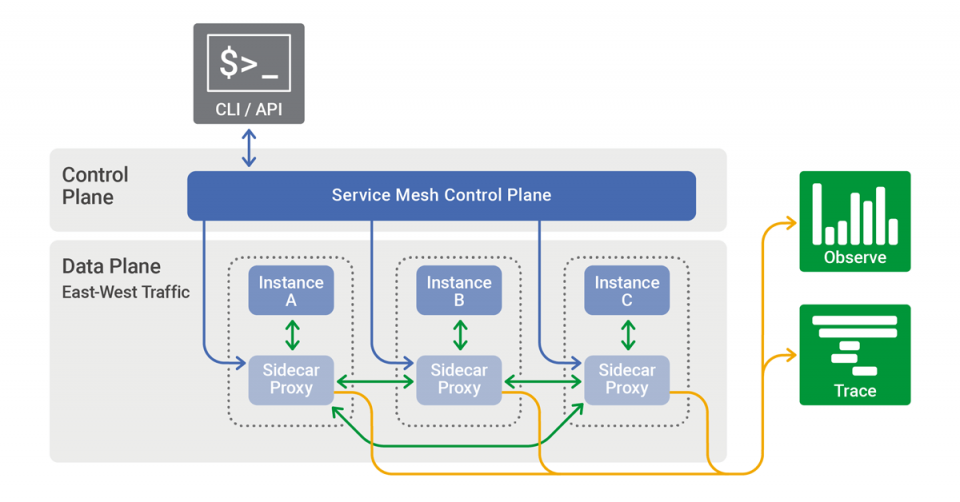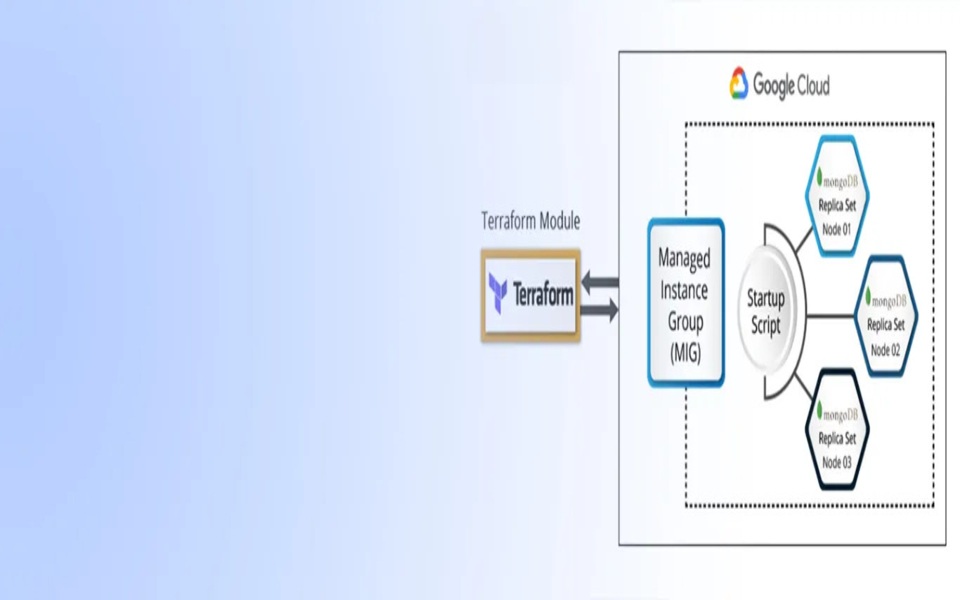Service Mesh - Manage Service-to-Service Communication within your Microservice Application Efficiently
Microservices has redefined software engineering, and therefore the way businesses operate, compete and grow within the present ever-changing world. Microservice architecture takes complete advantage of the cloud and offers businesses the flexibility to scale, and address change, and cater to customer demands faster than ever before.
This architecture has shaped businesses and has given rise to services and products which otherwise would be difficult if not impossible to create. Giants like Google, Amazon, eBay, Netflix, Uber, SoundCloud, and lots of others owe their justifiable share of their success to this engineering marvel.
DevOps, CI/CD, and Containerized Infrastructure have tremendously changed the way applications are built, deployed, and maintained today.
Older businesses too are slowly migrating their applications from Monoliths to Microservices to stay abreast of their competition.
Nevertheless, Microservices, like all other tech and business solutions, has its fair set of challenges. However, over the years, new solutions are built successfully to deal with these problems and streamline the development processes even more.
Today we're going to focus on one such problem and mention a suitable solution to deal with it.
Let's start.
First, let's discuss Microservices in short and talk a touch about the matter we're trying to eliminate.
What is a Microservice?
Within a Microservice architecture, the entire application is de-escalated into smaller manageable Services. Each service is identified by its own business logic and is developed and deployed independently within a cluster.
Breaking down the appliance development into multiple logical units gives developers and therefore the operations team several advantages.
Each service is often autonomously developed using a language and a database of their choice. The operations team can independently deploy this Microservice on hardware configured to run this service alone.
Individual Services are often scaled separately based on their workload. Continuous integration and continuous delivery pipeline with complete automation, that forms the overarching theme of such development practice lead to fewer errors and faster rollouts.
In this manner, new features are often introduced rapidly within the application. This reduced time-to-market gives businesses a competitive advantage.
Now that we've seen the brighter side of Microservice Architecture, let talk a touch about its shortcomings, the chink within the armor if you'll.
Challenges of Microservices Applications
Besides business logic, each service has other networking tasks which are essential for Microservices to function properly. These can make the Services very complex and difficult to take care of. Let's discuss each of those briefly.
Communication: Each service must communicate with two or more Microservices, and therefore the Web Server to send and retrieve data. Sometimes communications may fail thanks to transient faults within the system.
Timeouts, retries, and circuit breaking functions need to be implemented to handle the network, hardware, and software problems appropriately. Doing this for each service is often expensive and will be an almost impossible feat for large-scale applications.
Security: Within a Microservice Architecture, Services can ask other Services within the cluster freely, unless there's a further layer of security between them.
If left unconsidered, it's going to pose an enormous security threat and maybe disastrous if your application holds sensitive data within it.
Additional configuration is required within the cluster to deal with security issues and to use a stricter security policy. Again, implementing this inside every service could increase the complexity of the service, and lift the value of developing the application.
Monitoring Performance: Insights into the performance of every Microservice are often vital to your development and operations team, to assist make further improvements and enhancements to the application.
Thorough monitoring of errors, the number of requests each Microservice receives and sends, and bottlenecks with regard to hurry and performance of every Microservice can help teams identify critical problems beforehand. These issues are often prioritized and resolved within the following iterations of development.
Now that we've outlined a number of our concerns within a Microservice application, let's examine how these are often tackled with a Service Mesh.
What is a Service Mesh?
A Service Mesh is actually an infrastructure or network layer which employs a proxy to handle all essential non-business communications between Microservices in a Cloud Native application.
This is done with the assistance of two important components of a Service Mesh - the data Plane and therefore the Control Plane.
Data Plane: A Proxy is implemented as a sidecar alongside each service. This proxy mediates and controls all network communication to and from Microservice.
Control Plane: this is often the abstract layer through which you'll implement, configure and manage proxies for each Microservice pod.
Eliminating Problems with a Service Mesh
Let's dive deeper and take a glance into how a Service Mesh addresses each of the Microservices' problems mentioned earlier.
Communications: The sidecar pattern takes care of all the network logic for the appliance. The proxy for the Services is often configured for service discovery, routing, and load balancing. Further, you'll configure policies for timeouts, retries, and circuit breaking easily.
Security: you'll easily configure security policies for the Services via Transport Level Security (TLS) and policies like Access Control Lists (ACLs) are often implemented.
Monitoring Performance: to watch and analyze performance metrics, or tracing logic, a third-party monitoring application like Prometheus is often implemented on the Service Mesh. this will give the event and therefore the operations team all the required insight needed, to further perfect their build.
So the Service Mesh addresses these problems for you. Moreover, the complexity of the Services themselves is reduced by separating the business logic from the security and communication tasks.
Since the developers are free of the task of managing nonbusiness logic, they will now specialize in developing features and be more business and market-oriented.
Given below are additional features which make a Service Mesh all the more indispensable.
Control: A Service Mesh gives granular control over setting up rules for communication between Services. Also, you are not going to configure each proxy separately. All the rules are often configured via the Control Plane, and therefore the networking and security rules are propagated to the proxies. The Proxies then, with the new rules, deal with the service to service communication on behalf of the Services.
Automatic Service Discovery and Registration: When a new Microservice gets deployed it gets registered to the Service Registry. The Service Mesh automatically detects the Service and therefore the endpoints within the cluster. The proxies are ready to reference the Service Registry and query the endpoints to speak with the relevant Services.
Canary Deployment: This is often another strong feature within a Service Mesh that will be a lifesaver. When a new version of a service is released, you'll configure the Webserver Microservice to separate the traffic and send a little percentage of it to the newest version you've unrolled, for an outlined period.
This way you'll check and identify bugs and performance issues and roll back the service for further correction if required. Traffic splitting also can be used for A/B testing to see if new application features are beneficial or damaging to your business or users.
Gateway: A gateway is an entry and exit point for inbound and outbound traffic to your application cluster. A Service Mesh allows you to configure load balancing properties like port and TLS setting to the present proxy that runs at the sting of the mesh.
Popular Service Mesh Applications.
A Service Mesh is essentially a paradigm or a pattern. There are several popular third-party applications such as Istio, HashiCorp Consul, and Linkerd which are implemented more than others.
Linkerd is a lightweight and simple alternative that is being developed under the patronage of the Cloud Native Computing Foundation (CNCF).
Conclusion
Microservices may surely be an answer to today's demanding business needs. However, it has its own challenges in regard to communication and security.
But when coupled with a Service Mesh, you could build applications that are easy to manage, deploy, and configure, with the needed security built-in.
I hope you've found this information helpful. Comments appreciated.


































